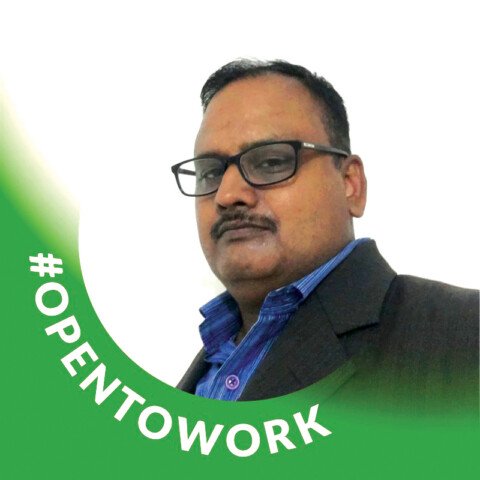Breakthroughs in logistics are supporting continued progress in the pharmaceutical supply chain: packaging innovations, tracking and monitoring advancements, warehouse upgrades, shipping and transportation improvements, educational and training programs, and policy and regulatory development. Alongside applause for ensuring uninterrupted supply of life-saving drugs during the pandemic, the sector needs some nurturing. Consistency in the supply chain is crucial to a company’s overall performance, and in general, this be attained by diversifying the supply chain, balancing flexibility and resiliency with cost-effectiveness, and building strong relationships. Excerpts from Stanley Fernandes, Deputy General Manager, Bharat Serums & Vaccines Ltd (BSVL) interview with Upamanyu Borah.
The COVID-19 pandemic has brought the pharma sector to the brink of a huge transformation. So, how is the strategy shift in demand forecasting and supply planning?
Basically, we have put across a system wherein the demand forecasting and supply planning becomes more robust to take care of the market requirements. And considering the opportunities available during this pandemic, since all products are life-saving medicines and mostly hospital driven, we have formed specific parties to detect trends and forecast events and conditions. Based on the needs of the market, we are ensuring the production alignment to meet demand, and designing the supply chain to play a key role in influencing production flows and incoming sales. Special weightage is given to sales and operations planning (S&OP) process to fine-tune every step – from manufacturing to delivery. Additionally, standard operating procedures (SOPs) are in place to ensure that industry compliance standards are followed and met properly.
Simply put, a lot of push is being given to ensure the market doesn’t suffer and we do not lose any opportunity. It is a difficult market already and a lot of competition is there.
Numerous forces are reshaping the environment in which the industry operates and dictating the need for a different sort of supply chain. How did BSVL prepared to usher this shift to make the best out of the pandemic?
We started feeling the heat of the pandemic since March. And after the announcement of the lockdown on the midnight of March 24, everything was at a standstill. Many did not want to get their business moving due to fear of the outbreak. But ours being a life-saving business, demonstrated the resilience to quickly react and adjust operational mode and maintain the supply of medicines to the public.
During the outbreak and consequent lockdown, many vendors (freight forwarders) were not keen to function, handle customs clearance and manage shipments, most likely because of the obstacles and difficulties that were prevalent– lesser manpower and airlines not operating. In fact, the stakeholders– transporters, freight forwarders and airlines were not at a stage of aggregating the outbound supply chain. We kept a close watch over the available options and opportunities; for instance, if a freight forwarder is not offering service on a particular day, we had reached out to others to get the shipments moving. The follow up was rigorous; we were informed of the capacity available and flight schedules, to ensure supply chain readiness in terms of outbound shipment execution, their documentation, and getting them to the airport.
At present, flights to Kathmandu have still not resumed, and for shipments bound for Nepal, we have to look for alternatives and shifting some of our volumes to other modes of transport such as road, which usually take 5-6 days time and available at economical costs. Indian carriers Indigo and SpiceJet are looking to accommodate requests but they are not offering regular service or capacity as required. Therefore, we are trying to create orders– a full reefer container, so that we reach total capacity utilisation and deliver products in right condition without compromising on the quality of the cold chain.
Similarly, for products destined to Lima, the route is generally Mumbai-Paris-Lima and usually carried by Air France. Initially, during the outbreak, when flights were not operating on this route, we had to send shipments via Miami. The route was basically Mumbai-London-Miami-Peru.
What are the measures that need to be taken to increase the efficiency of the manufacturing and distribution functions as well as ensure transparent channels of communication between key parties?
Looking at these testing times, we need to build a robust supply chain in terms of manufacturing, packaging, handling, inventory, transportation, warehousing, and also security in order to minimise the risk of disruption and, ultimately, reduce spend. Healthy relationships between organisations and suppliers, and also between the SCM team and the rest of the stakeholders within the organisation, are key factors in building and maintaining a strong supply chain. And good working relationships require transparency on both sides to mutually benefit. The importance of continuous dialogue among all parts of the supply chain is therefore critical.
Most importantly, supply chain managers should have a proactive approach and adopt more flexible sourcing and distribution strategies and get products moving through the available channels, considering the increasing diversity of the market.
While pharmaceuticals with temperature-sensitive and shelf-life concerns deserve the most experienced, extensive, and expedient shipping attention, that doesn’t assure quality and safety unless products are packed correctly.
What measures have you implemented to ensure compliance requirements while maintaining a robust supply infrastructure?
No matter how good your preparations are or how strictly you control your service providers, there are many things that can go wrong in the cold chain. For instance, due to the pandemic, there were customs delays, state-wise lockdowns, and an endless number of other circumstances that had a detrimental effect on product quality and functionality. Whatever the solution for temperature-controlled transport, you need to be prepared for unforeseen events.
One strategy is to map all the touch points of the transport beforehand, in order to identify the weak parts of the chain and from there develop better contingency plans. To choose the right packaging solution is likely the most important strategy to reduce risks and guarantee seamless delivery to the destination, which in our part has helped a lot to tackle temperature lapses and maintain regulatory stringency.
How should companies partner with the cold chain service providers to help tackle some of the supply challenges in India? What should they especially look for as a key factor of best-in-class solutions?
The pandemic has pointed the need for recovery plan or intermittent operation plan and backup support– vendors. While it may be too late for some companies to create contingency plans to mitigate the current COVID-19 disruption, they should commit themselves to the planning needed to be sure they never experience the negative repercussions of a logistical or supply chain crisis.
Basically, pharmaceutical companies should adopt a holistic approach to their supply chain logistics. There will always be the need for alternative transportation measures when emergencies arise and there is a need to get products shipped more quickly. Companies should have two or more different vendors/transporters to evaluate and prioritise transportation planning and react quickly to market requirements.
In addition to that, organisations and supply chain managers should have quality vendors when dealing with cold chain products. Our products are mostly temperature-sensitive (typically maintained at 2–8°C) and after doing the production, we look for reliable partners, right from packaging solution services and transporters/freight forwarders committed to maintain the cold chain and work around their schedule.







